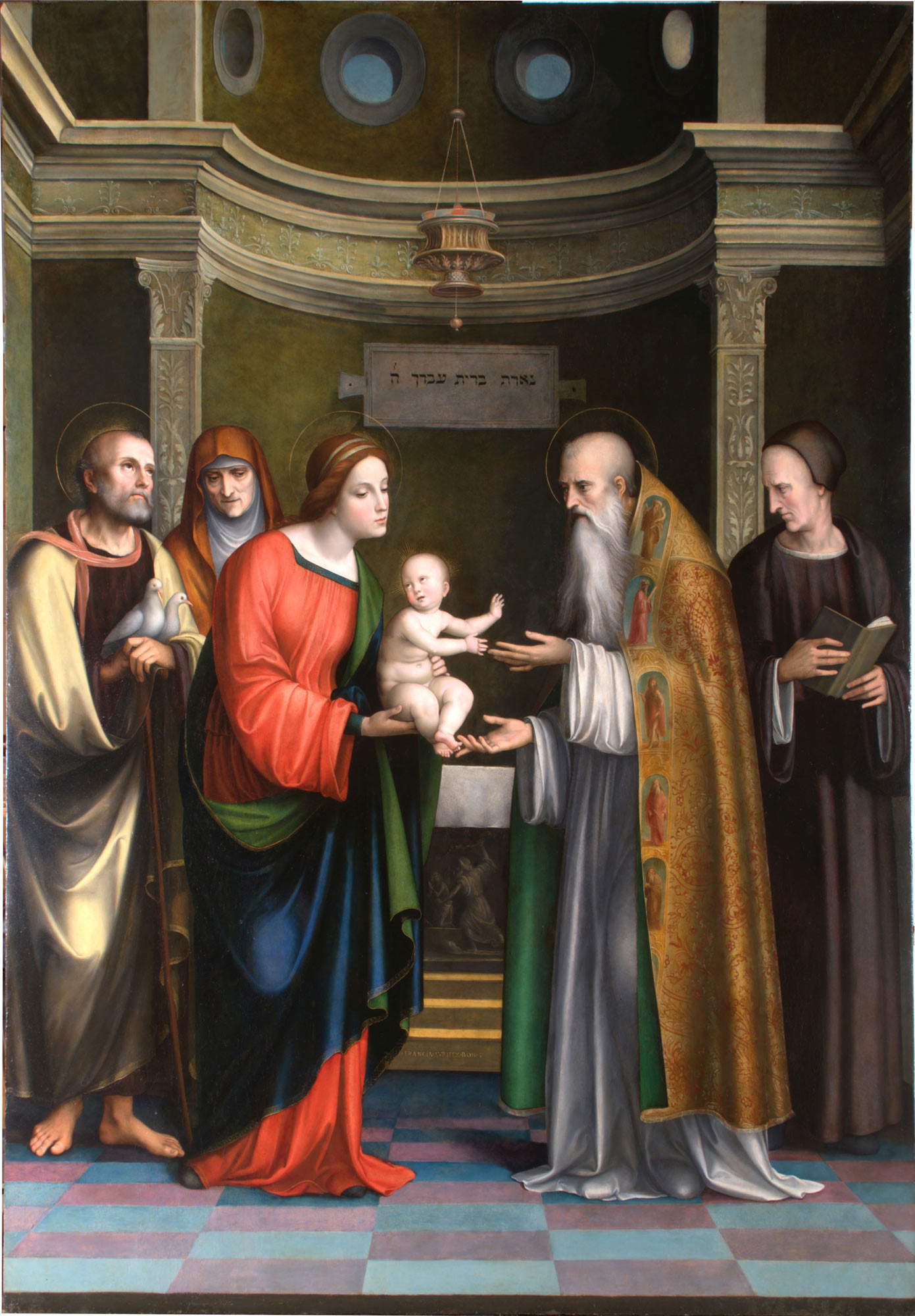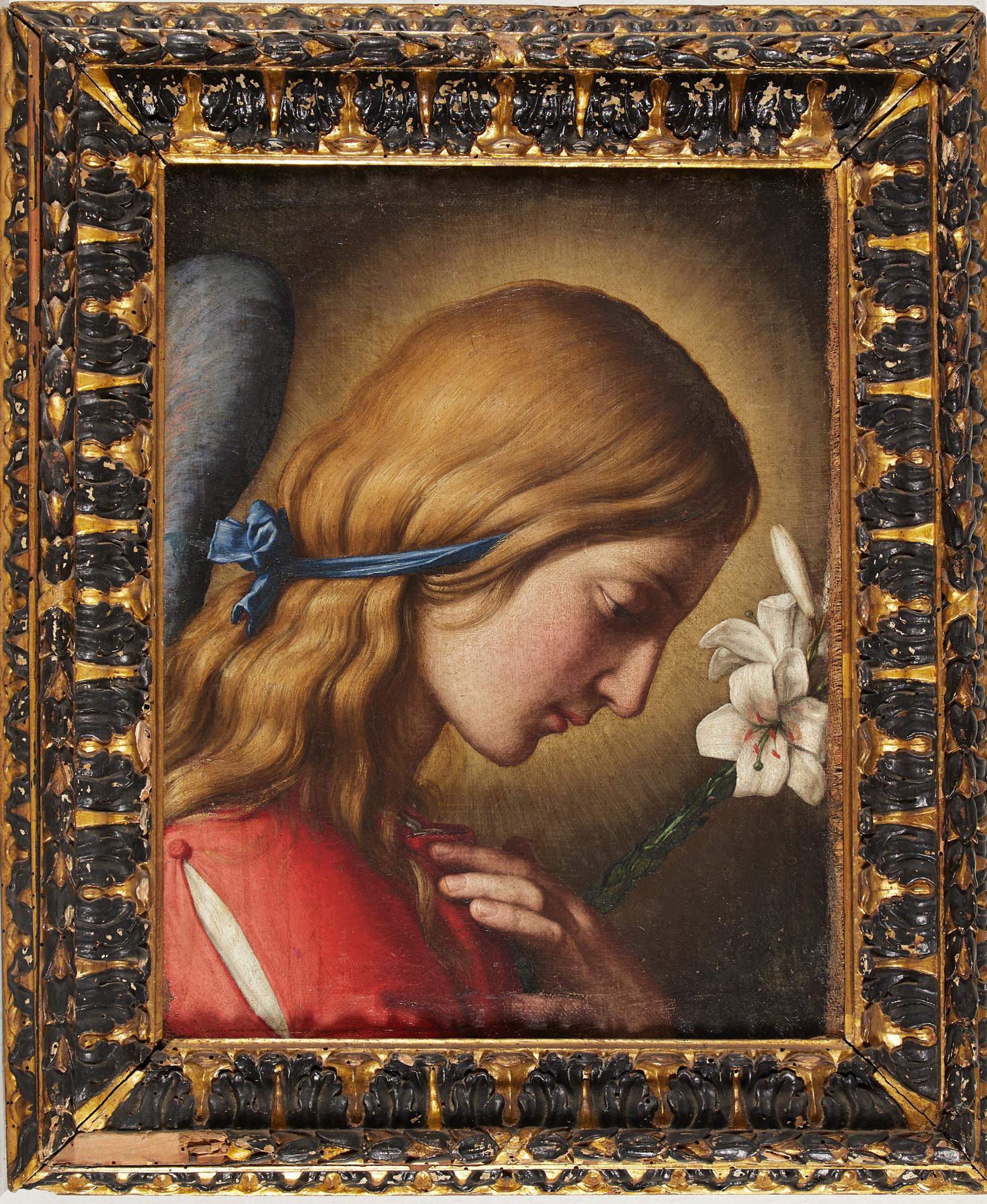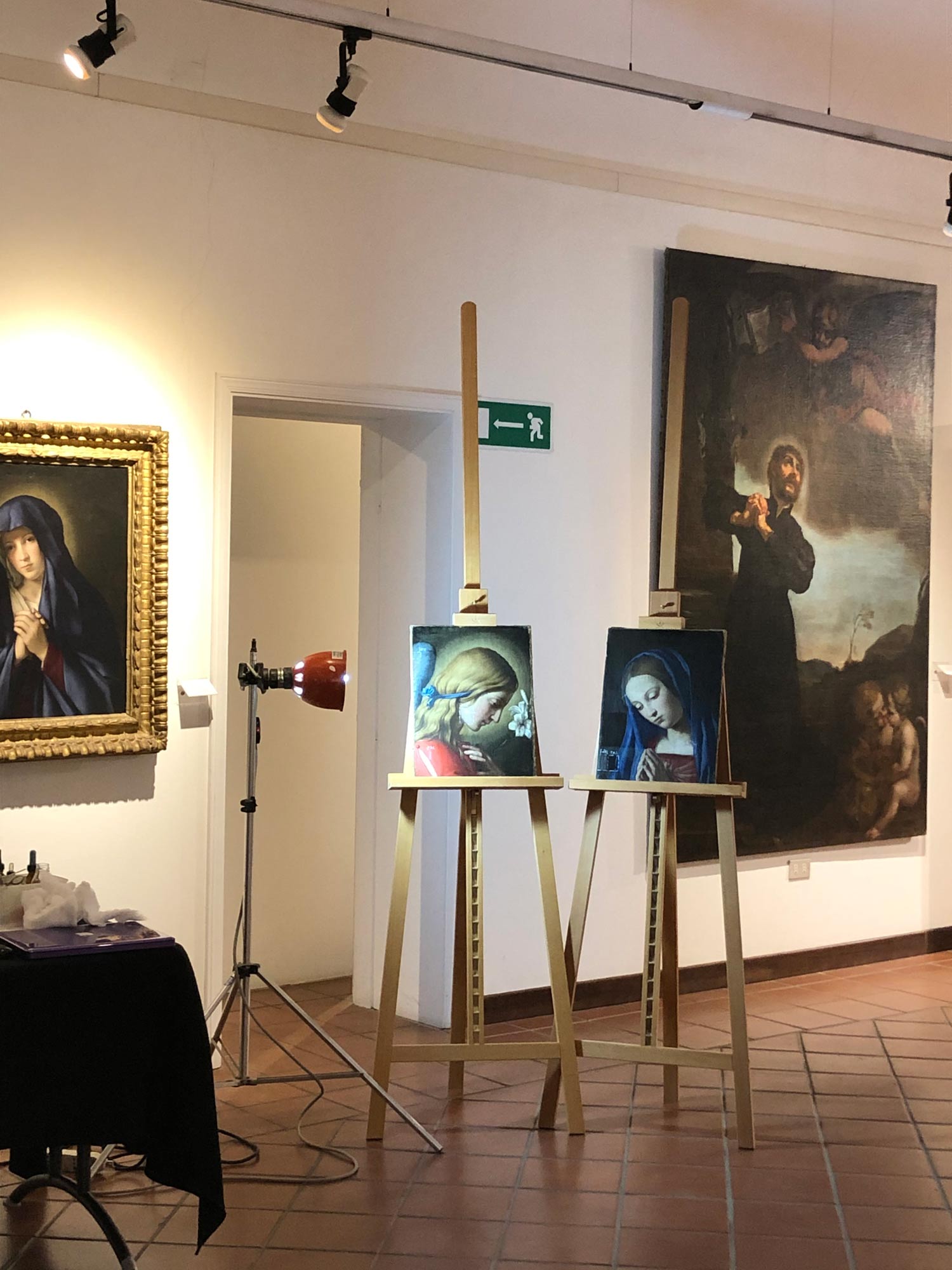Between 2019 and 2020, a major restoration was carried out on the Presentation of Jesus in the Temple and the Purification of the Virgin, an oil on panel painting probably painted in the second decade of the 16th century by Francesco Raibolini known as il Francia (Bologna, 1450 - 1517) and preserved in theAbbey of Santa Maria del Monte in Cesena. An intervention that restored the work to its legibility thanks to the removal of yellowed varnishes on the pictorial surface; non-invasive diagnostic investigations, such as ultraviolet fluorescence, infrared reflectography and the original preparatory X-ray; and some repentances, such as the Child’s hand that was originally raised in the act of blessing and not stretched out toward Saint Simeon as we see it today. The restoration was made possible thanks to contributions from Crédit Agricole Italia, the Fondazione Cassa di Risparmio di Cesena and the Institute of Cultural Heritage of the Emilia Romagna Region, confirming once again the added value of public-private synergy. Restoration of the pendant by Giovan Battista Salvi, known as S assoferrato (Sassoferrato, 1609 - Rome, 1685), with the AnnouncingAngel and the Virgin Announced, is also now underway: the intervention involves cleaning and removal of altered substances present on the pictorial surface, cleaning of the frames and anti-wormwood treatment. Both restorations, revealed under the pictorial film the drawing testify how, despite the health emergency we are experiencing, culture has not stopped and how work continues behind the scenes in order to protect the works.
The paintings mentioned were made more than a century apart, but they are linked by the same place: the Benedictine Basilica of Santa Maria del Monte. The latter dominates the city and surrounding plain from the Spaziano hill and has been an important center of worship and devotion for citizens since ancient times: this is documented by the very large collection of 704 votive tablets made by the faithful to thank the Virgin for a grace received or for recovery from an illness; it constitutes the oldest and most complete collection of ex-votos in all of Europe. The interior of the basilica, with a single nave and four chapels on each side, is decorated with various fine works of art, such as the frieze by Gerolamo Longhi with scenes from the life of the Virgin, the fresco on the bowl of the apse depicting theCoronation of the Virgin created by Giovanbattista Razzani, and the dome with theAssumption of Mary by Giuseppe Milani.
 |
| Francesco Raibolini known as il Francia, Presentation of Jesus in the Temple and Purification of the Virgin (c. 1515; oil on canvas, 145 x 201 cm; Cesena, Abbey of Santa Maria del Monte) |
The Purification Chapel houses Francesco Francia’s Presentation of Jesus at the Temple and Purification of the Virgin, a work commissioned in the 1510s by Abbot Giovan Battista Bertuzzoli, the future bishop of Fano, for the family altar. The painting is signed on the altar step FRANCIA AVRIFEX BON. F., with which the artist emphasizes his training as a goldsmith. In a single scene it combines two moments from Luke’s Gospel: the presentation of Jesus in the temple thirty-three days after his birth and Mary’s purification with the offering of two doves. The protagonists are Joseph, the elderly prophetess Anna, the Virgin who hands the Child to the priest Simeon, and a figure who looks away from the book to observe the Child. It all takes place in a monumental Renaissance apsidal space. The scene is characterized by the use of sober colors, by an essential composition that testifies to the “dolcezza ne’ colori unita” described by Giorgio Vasari, and by attention to detail, visible in Simeon’s preciously woven priestly mantle and in the friezes on the entablature. It is also dense with a strong feeling of devotion, typical of the artist’s later production: central is Simeon’s prophecy to Mary concerning Christ’s sacrifice. The latter is alluded to in the bas-relief on the altar base depicting the Sacrifice of Isaac; the Hebrew inscription on the plaque in the center of the apsidal space, on the other hand, refers to the bewilderment that the prediction arouses in the observer: a verse from Psalm 89 of the Bible, “You have despised the covenant made with your servant (Israel).”
The painting remained in the abbey until 1809, when, in the course of the Napoleonic spoliations, it was transferred to Milan, to the Pinacoteca di Brera. It was Canova who returned it to the Municipality of Cesena, but on its return it was placed in the Pinacoteca Civica, inaugurated in 1883 at the Biblioteca Malatestiana, where it underwent its first restorations by the artist Wenceslao Bigoni. It finally made its way back to the abbey in 1942, thanks to the monks of the Mount, who managed to obtain a deposit of the work from the Municipality: it was in fact returned to its original context, where it can still be admired today with its original wooden ancon and cymatium (probably added in the 1700s) depicting the Deposition of Christ created by the 16th-century painter Benedetto Coda and the predella with theEcce Homo attributed to Francia.
Also linked to the Benedictine basilica are five paintings by Sassoferrato, now in the Pinacoteca Comunale di Cesena, including the pendant with theAnnouncing Angel and the Virgin Annunciate. The five canvases (in addition to the latter, the Vergine addolorata, the Madonna col Bambino and the Vergine in preghiera, which in 1869 were already in the Palazzo Comunale, having probably arrived from some local noble picture gallery) were donated in 1686 to the Abbey by Modesto Vendemini, who in that year had been elected abbot of the Cesena coenoby again (the first time from 1671 to 1676). These are works in which the sweetness and purity characteristic of the art of Sassoferrato, an artist who in the mid-seventeenth century was among the most in demand for devotional-themed paintings that were inspired by early seventeenth-century classicism, influenced by the master Domenichino, and by Raphaelesque models, is clearly visible. He used bright, glazed colors and possessed great mastery of mark-making. For his refined depictions of Madonnas, very often shown with bowed faces and clasped hands, Sassoferrato is considered “the painter of Madonnas.” The Virgin Announced, portrayed in the foreground with bowed head and clasped hands, is also in the same position. TheAnnouncing Angel is portrayed in profile with a blue ribbon in his blond hair; he wears a red robe and holds a lily in his hand. Of Sassoferrato’s works preserved in the Pinacoteca Comunale, these are the only ones whose provenance is known with certainty: on the back of the frame of both is an inscription denoting them as a gift from Modesto Vendemini to the Basilica del Monte.
 |
| Giovan Battista Salvi known as Sassoferrato, Announcing Angel (1680-1685; oil on canvas, 33 x 45 cm; Cesena, Pinacoteca Comunale) |
 |
| Giovan Battista Salvi known as Sassoferrato, Virgin Announced (1680-1685; oil on canvas, 33 x 45 cm; Cesena, Pinacoteca Comunale) |
 |
| The two works by Sassoferrato at the Pinacoteca Comunale di Cesena |
From Francesco Francia’s canvas to Sassoferrato’s paintings, it is possible to trace an itinerary through the city’s most significant places, from the Basilica to the Pinacoteca; in fact, Cesena also offers other places to visit in addition to the famous Biblioteca Malatestiana, the only humanistic monastic library still perfectly preserved, recognized in 2005 as a Unesco World Memory.
So from the Abbey one descends to the valley along the Via delle Scalette, which in 2020 was the subject of a crowdfunding campaign for its redevelopment. It is one of the oldest pilgrimage roads to the Mount used by Cesena’s inhabitants: a historic-landscape corridor immersed in nature, dense with spirituality, offering striking glimpses of Cesena’s city and rural landscape. When you reach the Giardini Pubblici (once the vegetable gardens of the church of San Michele), you can see the Teatro Comunale dedicated to local tenor Alessandro Bonci: the building, for a long time among the major centers of Italian opera, was designed by architect Vincenzo Ghinelli and inaugurated in 1846. Past the theater, on the right is the Chiesa dei Servi, located in the old Valdoca district. Inside the church, which once housed the burials of the family of Pius VI Braschi, the first pope from Cesena, are many works of art, including the painting depicting St. Charles Borromeo visiting the sick by Caravaggio painter Carlo Saraceni.
Finally, we arrive at the San Biagio complex, a former nunnery turned into the headquarters of various cultural entities in the city, including the Pinacoteca Comunale. This exhibits paintings and sculptures, mainly from Emilia-Romagna, ranging from the 15th century to the contemporary age. In a few years, the city’s new Pinacoteca will be open to visitors, in Palazzo OIR, in Piazza della Libertà, with works from the Fondazione Cassa di Risparmio di Cesena and municipal collections.
Warning: the translation into English of the original Italian article was created using automatic tools. We undertake to review all articles, but we do not guarantee the total absence of inaccuracies in the translation due to the program. You can find the original by clicking on the ITA button. If you find any mistake,please contact us.